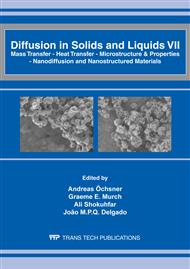p.1
p.12
p.18
p.24
p.29
p.35
p.43
p.48
Fabrication and Properties of Sn-3.5Ag-XCu Solder by Ball Milling and Paste Mixing
Abstract:
The present work is focused on the preparation and the properties of Sn-Ag-nanoCu composite solder by two methods, i.e. ball milling and paste mixing. Copper nanoparticles were added at two different compositions, 0.7% and 3%, to Sn-3.5Ag solder powder and paste by ball milling and paste mixing, respectively. The composite solder was deposited on the Cu substrate and heated at 250°C for 60 seconds and allowed to cool at room temperature. The wetting ability was evaluated with the wetting angle of deposited composite solder on Cu substrate. The microstructure, morphology and hardness were examined for composite solder joints. It was found that the lowest melting point was achieved at 213.6°C for Sn-3.5Ag-3nanoCu produced by ball milling. The wetting angle deterioted as Cu nanoparticles were added into the Sn-3.5Ag solder paste by paste mixing. However, when Cu nanoparticles were added by 0.7% and 3.0% by ball milling, the wetting angle improved by 5% and 37%, respectively. The hardness of composite solder improved up to 32% when 3% Cu was added by ball milling.
Info:
Periodical:
Pages:
12-17
Citation:
Online since:
April 2012
Authors:
Keywords:
Price:
Сopyright:
© 2012 Trans Tech Publications Ltd. All Rights Reserved
Share:
Citation:


